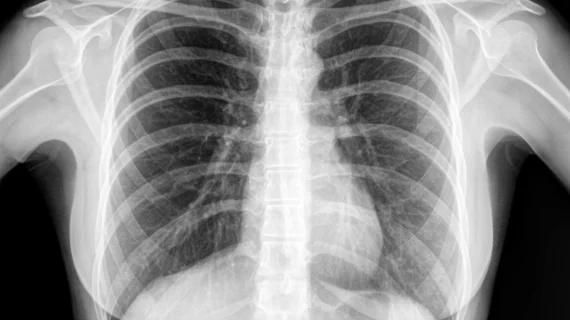TB-detecting AI tool shows promise for improving screening in low resource areas
A new artificial intelligence system can detect active tuberculosis on chest radiographs with an accuracy comparable to radiologists, a recent paper in Radiology reports.
Given that TB often occurs in countries where resources are limited, experts involved in the study suggested that the system’s performance merits future consideration as a screening tool in these areas.
“Bridging the expert shortage is where AI comes in,” said first author of the paper Sahar Kazemzadeh, BS, a software engineer at Google Health. “We can teach computers to recognize tuberculosis from X-rays so that in these low-resource settings a patient’s X-ray can be interpreted within seconds.”
Researchers trained and tested the deep learning system retrospectively on a diverse set of chest radiographs that were completed from 1996 to 2020 in 10 different countries, resulting in a total of 165,754 images from more than 22,000 patients. Using cases confirmed to be positive for TB, experts compared the performance and efficacy of the DLS with that of 14 radiologists.
Compared to the physicians, the DLS achieved higher sensitivity (88% vs 75%) and comparable specificity (79% vs 84%). Across all subsets, these trends remained consistent.
What’s more, the experts reported that use of the system to identify patients that are likely to be TB-positive could reduce costs by 40%–80% per positive case detected.
A Promising Future
Authors of the study indicated that their results are a step in the right direction for reliably introducing AI assistance into low resource areas.
“What’s especially promising in this study is that we looked at a range of different datasets that reflected the breadth of TB presentation, different equipment and different clinical workflows,” Kazemzadeh said. “We found that this deep-learning system performs really well with all of them with a single operating point that was pre-selected based on a development dataset, something that other medical imaging AI systems have found challenging.”
The researchers' hope is that the system can eventually be used as an automatic screening tool to detect TB before patients undergo sputum testing. This would save costs in instances where radiographs are negative for TB and could expedite the treatment for those who receive positive results, the authors suggested.
The system’s efficacy is currently being tested in a prospective study in Zambia.
For more information, click here.

